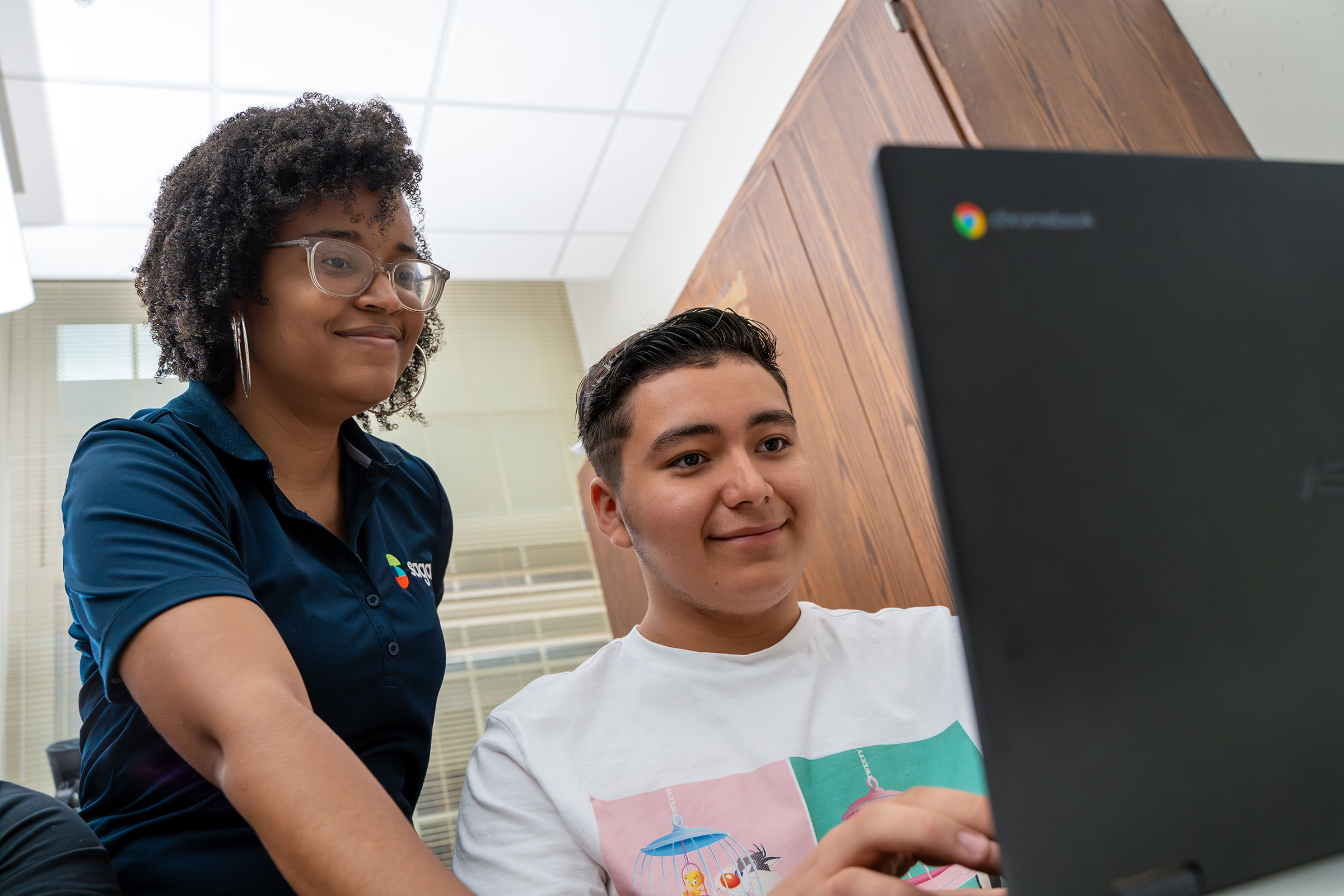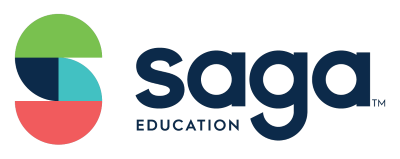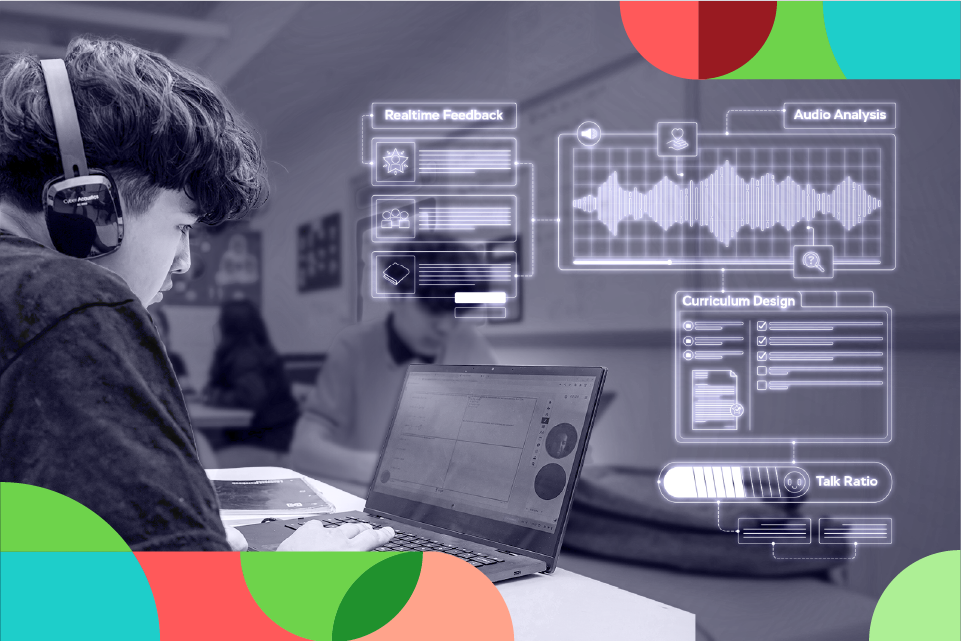Teachers across the US hold a critical responsibility for ensuring the development of each of their students. However, widespread teacher burnout impacts their ability to succeed in the classroom. Without meaningful support, many educators are leaving the teaching field.
Mounting responsibilities coupled with decreasing resources )which impact available supports) compound the issues. Teachers cannot keep up with demands without the resources they need to help their students succeed and overcome learning loss. Following the pandemic school closures, teachers need more support than ever to help their students overcome academic and, sadly, significant mental health challenges. The lack of support in the classroom and from district leaders, parents, and communities has devastated morale. Too many teachers feel they just don’t have the capacity to provide the significant support students need, particularly students from low-income communities.

High-Impact Tutoring Accelerates Learning By Supporting Teachers
High-Impact tutoring, facilitated during class time by trained tutors, can help teachers manage individual learners’ needs–whether it be for remediation or acceleration. Evidence has shown that if highly trained tutors are deployed at the most important educational transition points (3rd-grade reading and 9th-grade math), students, teachers, and schools are more likely to reach student accountability goals. Everyone wins.
Another positive aspect of high-impact tutoring is when offered in a live-online format, tutoring sessions occur on devices in real time, eliminating the need for additional people in the building or classroom.
1 – High-impact tutoring is a supportive resource for students, teachers, families, and districts
A consistent deficit in today’s educational system is the lack of supportive resources. From classroom supplies to human capital, schools are underprepared and undersupported. In the end, students are the ones who pay the price, especially in historically underfunded districts.
Without workplace support, educators struggle to teach in the best of circumstances. In a post-pandemic world where learning loss is rampant, and support is scarce, teachers cannot mitigate prior learning deficits, teach grade-level material, and meet their students’ social-emotional and behavioral needs. They are often managing disruptive and inattentive students and handling situations that are outside their scope of work. Teacher burnout is unsurprising when considering the sheer amount of stress they are under day-to-day.
Students need to be engaged with smaller group formats and relevant lessons. If a student with a substantial learning gap or lack of understanding of the materials doesn’t get the 1:1 support and attention they need, they cannot properly engage or focus, much less learn new material. This can exacerbate focus and attention issues and detract from the whole group instruction, frustrating teachers and students.
High-Impact tutoring provides each student with a tutor who cares about their success as much as their classroom teacher does and is committed to helping them learn the materials and get caught up to grade level. This aids successful instruction and identifies individual needs while providing kids with a caring, consistent adult, apart from the classroom teacher, who can make sure they don’t fall through the cracks.
2- In-school tutoring allows for differentiation without using critical teacher time and resources
While teachers are excellent in their roles, they cannot be expected to play the role of teacher and deliver high-impact tutoring simultaneously. They are different roles with different responsibilities. While some have suggested that educators should implement high-impact tutoring during their lessons, it is impractical to saddle teachers with more tasks and less support.
Individualized support for each student is complex, especially for students struggling in critical areas such as math and literacy. Studies have shown that students who fail Algebra I in 9th grade are at significantly higher risk of not completing high school. Similarly, students who struggle with early literacy have worse outcomes throughout their educational careers.
These findings show the importance of making sure every student is up to grade level competence in math and literacy and how it can impact their educational path if not. They also show us that teacher performance is tied to prior experiences out of their control, and the responsibility to remediate learning cannot rest with just one educator.
Students learn differently and have varying needs coming into the classroom. Many may be ESL students or have an IEP in place. Some may be experiencing housing insecurity or moving frequently. Others may be working outside of school hours and struggling to get work done or find help with their schoolwork. Many factors require a 1:1 approach to ensure learning happens, no matter what obstacles or deficits their past educational experiences or current life circumstances have dictated.
Implementing high-impact tutoring allows for closer relationships between students and tutors, students and teachers, and among groups of students. Having a system of support and 1:1 learning opportunities can help improve learning without placing all the responsibility on one person or contributing to teacher burnout.
3 – High-impact tutoring can boost test scores and, therefore, reduce pressure on teachers.
Many states and school districts are heavily impacted by mandatory testing scores and performance reviews. This situation can be difficult for teachers, who must prepare students to pass tests. With large class sizes and students with significant learning loss and gaps in knowledge, the task is stressful and demoralizing for educators. Many teachers are doing the best they can with what they have, but operating in a broken system with inadequate resources puts them at a disadvantage.
Teachers want their students to do well on tests, but preparing students to meet grade-level standards without a solid understanding of foundational concepts is difficult to impossible. As usual, this impacts students the most, but teachers struggle with the pressure to make up for flaws that are outside of their control.
High-impact Tutoring by Saga Education™ is unique in that it is one of the few interventions that has been proven to help students overcome learning loss and accelerate learning so they can get back on track. This sets them up for success in the classroom, and it sets teachers up for success with mandatory testing and performance benchmarks. When teachers have the right support in the classroom to help students achieve, everyone wins.
How Can Your District Best Support Educators and Relieve Teacher Burnout?
High-impact tutoring programs offer proven, data-driven, research-backed solutions to learning loss and closing the achievement gaps for students from all backgrounds. It is also one of the few solutions districts can implement in a cost-effective and accessible way. When teachers, trained tutors, and students work together toward achievement goals, anything is possible. Providing high-impact tutoring in the classroom supports students and teachers working together and can help bring hope back into the conversation. Many educators get into teaching to make a real difference for kids. Allowing teachers to do what they do best, teach, with the support of trained tutors, can help make that happen.
Discover how Saga Education Solutions can close the learning gap at your school or district.



